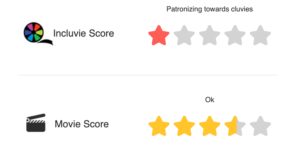Incluvie Foundation Gala - Learn More
Why Trans Women Can’t Have a ‘Promising Young Woman’ Yet: A Lesson from ‘Sleepaway Camp’
For anyone who is not a cis white woman, a justice-fueled murderous rampage is not framed as liberation. Instead, they contribute to harsh stereotypes that vilify minority women with dangerous consequences.
Sleepaway Camp (1983)


TW: Transphobia, Sexual Assualt, Violence, Misogyny // Spoilers for Sleepaway Camp ahead
We [meaning mainly the girls, the gays, and the theys] all love a good revenge film — Jennifer’s Body, Ms. 45, Carrie, and the new addition to the canon: Promising Young Woman. All the films feature a woman who enacts her own version of justice against those who are not being punished for a heinous crime — normally upholders of oppression like sexual assaulters. Though violent, sometimes exploitative, and not usually having a happy ending for the femme protagonists, at the center of these stories are questions about how justice truly functions in our society. As we’ve seen post #metoo, industries have slowed in making progress and even the so-called damaging “cancel culture” has not removed most abusers from their platforms. In this subgenre, fantasy and catharsis intertwine as one where we can escape to an alternate reality where the oppressed play karma in making those who killed our soul suffer in response. Though it does not fix the structural roots and usually punishes the women in the finale, the everlasting images are an escapist fantasy where related audience can feel sublime satisfaction that only comes with pure vengeance. That’s why we [see previous] love them.
A Brief History of Transphobia in Horror
For anyone who is not a cis white woman, a justice-fueled murderous rampage is not framed as liberation. Instead, they contribute to harsh stereotypes that vilify minority women with dangerous consequences. Particularly, trans women have been coded as serial killers for decades — especially since, possibly the most famous horror film ever, Psycho. The trope has expanded since then where explicitly or implicitly coded trans serial killers have made up some of the most well-known villains in horror and cinema history: including Leatherface, Bobbi, and, worst of all, Buffalo Bill. The most explicit — and “coincidentally” the most egregious, in my opinion — is the 1983 B-movie Sleepaway Camp. The protagonist is revealed to be trans, forced into being a girl by the eccentric aunt she is sent to live with after a freak boating accident kills both her sister and father. She goes on a killing rampage murdering all the bullies who torment and do her wrong during her time there. When Carrie did this to her classmates, there was a certain sympathetic tone to her atrocities. There’s even a clear case of justification for her murderous escapade. She, however, has never been referred to as a serial killer in cinematic discourse but more as something closer to a misunderstood superhero. For trans women in media, their perception and representation are completely different with grave consequences. Historically, when they have been shown in mainstream media, there is an association of fear, intense violence against women, and an issue of severe psychological trauma on part of the trans character. Cis white women from Carrie to Cassie are given the guise of innocence and retaliation while trans women are stereotyped into monstrous creatures more often than not.

Paradoxical Protagonist
Sleepaway Camp’s Angela goes down in horror history as not only a serial killer but from her horrific and dehumanizing end. Despite her maiming a pedophile who tried to molest her or the abusive owner of the camp who bloodies up her 14-year-old cousin, Angela’s last moments on-screen are disturbingly primal and unsympathetic towards her. The twist of the entire film is that not only is the quiet girl, Angela, the killer tormenting the camp but she also was trans. The explanation given is that she was forced into dressing and acting feminine because her aunt wanted a daughter (which, like most horror representations of trans people, is incorrect, almost unheard of, and not how transitioning or identification works). What’s even more chilling is that the film seems to imply that being trans is part of the reason she has this pent-up rage. She often uses phallic weapons to kill her victims (arrows, knives, curling irons) which could be coding that the “male part of her” (using the movie’s ideology) is what fuels the killing. There is even one quite horrible scene that implies she uses the curling iron to rape and kill the cabin’s most promiscuous member, Judy. This type of iconography fuels the idea that trans women will hurt, particularly through sexual assault, cis women when allowed into women-only spaces. This is a long misplaced fear that both invalidates trans women’s identity and leads to legislative as well as violent action against them.
You might be wondering, though, how do they reveal she’s trans? Well, in the most brutal and vulnerable way possible. She is discovered naked on the beach — with the decapitated head of her love interest, Paul, on her lap while she hums. Suddenly, she magically is standing up (a weirdly quick transition) with her mouth frighteningly wide open, grunting in this inhuman way, and she is revealed to have a penis. Up until this point, I was enjoying the film and thought it was this weird knock-off of Friday the 13th. After this, I was close to tears. Though the most memorable part from the movie by fans, I found it highly disturbing how villainized and shocking Angela’s body was meant to look. It, per usual, reduced trans people to genitalia and weaponized hers for the surprise of difference instead of just a body. One of the worst parts about this is that they took a mold of the 14-year-old actress’ face who plays Angela and put said mask on the body of a cis 20-something man. Over-aging the character’s prepubescent body reinforces the idea of a trans woman being predatory, adult men, rather than the teenage girl she is. The feral grunting is completely out of character, a random choice used to further turn Angela more inhuman and animalistic to the audience. The last shots of the film associate an unrelated revelation with a carefully edited shock. Yet, the story also carelessly gives no thought to the community they disparage in their climactic final moments.

Accidental Authenticity
Simultaneously, though, the film does provide (most likely unwittingly) some authenticity in representing trans experiences. Angela is viewed as a mystery by all the boys due to her newness to the camp, her silence, and her refusal to eat. They seem to want to crack her in some capacity whether it be through flirting with or bullying her. Most of the women, however, are quite cruel to her — particularly Judy and one of her counselors, Meg. Judy gets very jealous when she starts to warrant attention from Paul and tries to hook-up with Paul when Angela refuses to fool around with him. It demonstrates the common experience trans women face of being fetishized, hated, or both by cis men because of their identity. At the same time, it also recognizes how hostile and judgemental cis women can be of trans women, especially in more “intimate” spaces like shared rooming, swimming, and bathrooms. They both see her as competition and as a threat to their safety. Despite data not having been collected then, it even shows the reality that trans women are more likely to be victims of sexual assault when the cook tries to do so to her (and only her). Thus, most of these characters fall into these stereotypes and are the reason Angela takes revenge on them — to be liberated from their warped perceptions and cruel actions. In this way, Angela does encompass the trans experience from a social point of view and makes it easy for trans viewers to relate to her character, for which there does seem to be a minimal following. Though, is it a case of taking what representation one can get? Reclaiming something offensive? Or is Angela truly a trans icon? In essence, it seems a bit of all three. I would not think Cassie would have to undergo this scrutinizing, being just an icon for cis women (though her reliance on the American legal system for justice does show some white privilege that should be acknowledged).
Besides the unfitting and transphobic finale, the film was actually fun up until that point. The plot itself resembled a slightly more interesting Friday the 13th that ends up being scarier because one gets to know the characters more here than the predecessor. I laughed at the crude campiness of the story and enjoyed the weird dialogue that was both on-the-nose and incorporated timely slang. It even had the ever-popular bimbos and himbos that provide the best costuming and one-liners that every cult film needs. The outfits had a fun 80s flair and incorporated some more “feminized” clothing for masculine characters that often gets overlooked when reminiscing on the time period — like men wearing crop tops, bright colors, and short shorts. I was even pleasantly surprised when they showed that Angela’s father was gay and had a boyfriend. The film is even framed so you identify with Angela for 99% of it. She embodies the awkward year of puberty in many ways — being shy, an outcast, wanting to find love, and insecure when comparing herself to other girls. She is very easy to relate to, especially when all the other characters, besides her cousin Ricky, are pretty cruel to her. As stated previously, the revenge nature of the story is very similar to Carrie and so are the characteristics of the two girls.

Conclusions
It could even be argued that this is the Promising Young Woman for trans women. Due to her being one of the few explicit representations of trans women and her standing up against her bullies (who are pretty genuinely bad people for the most part), she is considered to be kind of an iconic hero by some. This may also revert back to the sentiment that “beggars can’t be choosers”. Well, I wish that not to be the case anymore. Hopefully, we can evolve to a world where trans people’s representations don’t have to be so closely monitored and scrutinized because of the fear it will continue to influence the fatal misconceptions of the community. In 2020, trans deaths were reported at an all-time high in October, since the tracking of such data began in 2013. Maybe media can be employed for the opposite effect, to teach about the community and undue society’s institutionalized prejudices. I hope that day isn’t too far off — everybody deserves a campy, revenge icon.
To learn more about transgender representation in media, click here.
Author’s Notes:
*Though Angela doesn’t show the correct summation of the trans experience, I used she/her pronouns since her character makes the decision to transition and identifies as a woman later in the franchise
*My diversity scoring is an average between my perception of the film
being hateful in some ways and others in the community who find her character redemptive

More to explore
By Same Author
Related lists created by the same author




